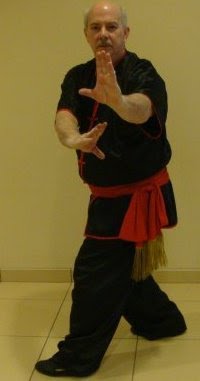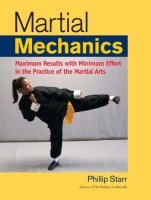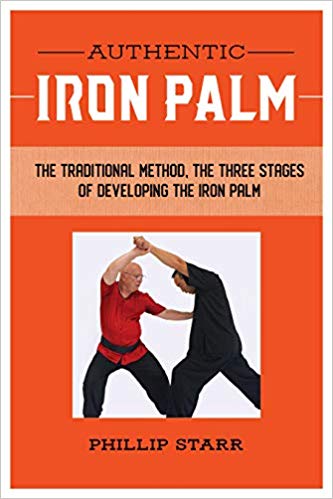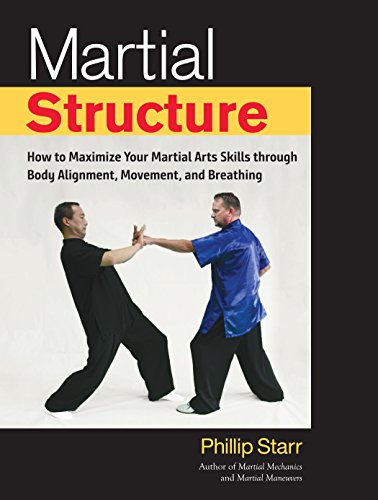 It was during my last year of high school back in 1967 that I decided to attend Tokyo University. I frankly didn't care one whit about which university I attended; I wanted to go to Japan and study the martial arts - especially karate. I wrote to Master Masutatsu ("Mas") Oyama, who was the founder of the Kyokushin style of karate. I held a black belt grade in his system and discovered that he allowed a certain number of foreigners to live in the honbu dojo (headquarters training hall) each year. I had visions of waking up, cleaning the dojo, working out for a short time before breakfast...what a life!
It was during my last year of high school back in 1967 that I decided to attend Tokyo University. I frankly didn't care one whit about which university I attended; I wanted to go to Japan and study the martial arts - especially karate. I wrote to Master Masutatsu ("Mas") Oyama, who was the founder of the Kyokushin style of karate. I held a black belt grade in his system and discovered that he allowed a certain number of foreigners to live in the honbu dojo (headquarters training hall) each year. I had visions of waking up, cleaning the dojo, working out for a short time before breakfast...what a life!
Ah, but life had different plans for me. I was accepted at Tokyo University and Mr. Oyama actually wrote me back and invited me to stay at his dojo...but try as I might, I couldn't get enough money put together to bring this dream into reality.
I still have that letter that the legendary "god-hand' (Mr. Oyama) sent me. One of his statements stuck in my head and it's still there. For some years I couldn't figure out exactly what he meant but as I matured and kept training, I came to understand it. He wrote, "I always look forward to teaching my foreign students in Japan. The most important thing for them to learn while they are here is spirit..." He said that it was the most difficult thing to teach Westerners.
What Master Oyama was talking about has nothing to do with religion, ghosts, or any of that sort of thing. What he was referring to is the very glue that holds together each aspect of the martial ways of the East. It is very a very real, almost palpable thing although it cannot be weighed, measured, seen, heard, or tasted... But without it, there are no true martial arts - just exercise and dance routines.
You cannot really understand this concept through intellectualizing about it. Talking or reading about it may help you acquire a basic grasp of its meaning but to truly know it you must experience it directly. It isn't something that you try to experience from time to time; it's something that has to be strengthened, refined, and lived every day.
To find a simple definition of it is far from simple. It is a striving for perfection - perfection of technique, perfection of form, perfection of physical skill - and these lead to perfection of character, proper behavior, correct etiquette at all times, and consideration and respect for yourself and others.
You don't seek perfection only within the boundaries of your chosen martial art. At first, that seems to be the goal but with time, introspection, and incessant training, you seek perfection in everything you do.
It begins with relentless training of the body, which leads to training and refinement of the mind. This means training daily. In the East it's understood and accepted that training in any martial discipline is going to be painful and new students accept that (for the most part). In the West, things are very different. In our society, any form of discomfort is to be avoided. If training in aikido or kendo or any other martial form results in bumps, bruises, sprains, strains, and other assorted "ouchies", we either discontinue practicing until we feel that we're properly healed up or we might quit altogether. In short, we're wimps.
The find and develop this spirit, you must train daily even when you don't feel like it. You have to push yourself and find the strength to go on even when your body or mind feels like giving up. Now, I'm not encouraging you to practice when you have a serious injury or illness. Spirited training doesn't mean that you should be foolish...but it does mean being mature, tough, and unwilling to accept anything short of perfection. It means that you're unwilling to accept any excuses that you make up for yourself as to why you just can't practice every day, why your punch, kick, iai kata, or whatever, just isn't up to snuff.
No excuse is acceptable...to you.
It means being a useful and productive member of your community and society. It means being sincere and honest, and it means being honorable and standing up for what is right.
It's not something that you strive to develop and feel only when you don your practice uniform or attend your martial arts class. If that's what you're doing, then you're just playing "make believe" and your training will come to nothing. You either dive in head-first and immerse yourself in it or you stay out of it altogether. It's not something that you can do on a part-time basis.
You have to want to learn badly enough that you won't allow anything (I repeat...anything) to stand in your way. Words like "quit" are not a part of your vocabulary when speaking of your training or doing anything else that you set your hand and mind to do. To you, such ideas are shameful and unacceptable.
This kind of constant training will reveal to you, as well as your teacher and many of your classmates, much about your personal makeup. All of the ugliness and flaws, as well as the beauty of your personality and spirit will be laid bare. Your true self will be unveiled. This can be more than a little unnerving but it is part and parcel of traveling the path of the martial ways.
You must determine that even if your desire to learn should lead you to your own death, you'll do it. I know this probably sounds a bit melodramatic but that's how it truly is. The price for learning and acquiring a high level of skill in genuine martial arts can be very high and it involves much more than dollars and cents.


It was during my last year of high school back in 1967 that I decided to attend Tokyo University. I frankly didn't care one whit about which university I attended; I wanted to go to Japan and study the martial arts - especially karate. I wrote to Master Masutatsu ("Mas") Oyama, who was the founder of the Kyokushin style of karate. I held a black belt grade in his system and discovered that he allowed a certain number of foreigners to live in the honbu dojo (headquarters training hall) each year. I had visions of waking up, cleaning the dojo, working out for a short time before breakfast...what a life!
Ah, but life had different plans for me. I was accepted at Tokyo University and Mr. Oyama actually wrote me back and invited me to stay at his dojo...but try as I might, I couldn't get enough money put together to bring this dream into reality.
I still have that letter that the legendary "god-hand' (Mr. Oyama) sent me. One of his statements stuck in my head and it's still there. For some years I couldn't figure out exactly what he meant but as I matured and kept training, I came to understand it. He wrote, "I always look forward to teaching my foreign students in Japan. The most important thing for them to learn while they are here is spirit..." He said that it was the most difficult thing to teach Westerners.
What Master Oyama was talking about has nothing to do with religion, ghosts, or any of that sort of thing. What he was referring to is the very glue that holds together each aspect of the martial ways of the East. It is very a very real, almost palpable thing although it cannot be weighed, measured, seen, heard, or tasted... But without it, there are no true martial arts - just exercise and dance routines.
You cannot really understand this concept through intellectualizing about it. Talking or reading about it may help you acquire a basic grasp of its meaning but to truly know it you must experience it directly. It isn't something that you try to experience from time to time - it's something that has to be strengthened, refined, and lived every day.
To find a simple definition of it is far from simple. It is a striving for perfection - perfection of technique, perfection of form, perfection of physical skill - and these lead to perfection of character, proper behavior, correct etiquette at all times, and consideration and respect for yourself and others.
You don't seek perfection only within the boundaries of your chosen martial art. At first, that seems to be the goal but with time, introspection, and incessant training, you seek perfection in everything you do.
It begins with relentless training of the body, which leads to training and refinement of the mind. This means training daily. In the East, it's understood and accepted that training in any martial discipline is going to be painful and new students accept that (for the most part). In the West, things are very different. In our society, any form of discomfort is to be avoided. If training in aikido or kendo or any other martial form results in bumps, bruises, sprains, strains, and other assorted "ouchies", we either discontinue practicing until we feel that we're properly healed up or we might quit altogether. In short, we're wimps.
The find and develop this spirit, you must train daily even when you don't feel like it. You have to push yourself and find the strength to go on even when your body or mind feels like giving up. Now, I'm not encouraging you to practice when you have a serious injury or illness. Spirited training doesn't mean that you should be foolish...but it does mean being mature, tough, and unwilling to accept anything short of perfection. It means that you're unwilling to accept any excuses that you make up for yourself as to why you just can't practice every day, why your punch, kick, iai kata, or whatever, just isn't up to snuff.
No excuse is acceptable...to you.
It means being a useful and productive member of your community and society. It means being sincere and honest, and it means being honorable and standing up for what is right.
It's not something that you strive to develop and feel only when you don your practice uniform or attend your martial arts class. If that's what you're doing, then you're just playing "make believe" and your training will come to nothing. You either dive in head-first and immerse yourself in it or you stay out of it altogether. It's not something that you can do on a part-time basis.
You have to want to learn badly enough that you won't allow anything (I repeat...anything) to stand in your way. Words like "quit" are not a part of your vocabulary when speaking of your training or doing anything else that you set your hand and mind to do. To you, such ideas are shameful and unacceptable.
This kind of constant training will reveal to you, as well as your teacher and many of your classmates, much about your personal makeup. All of the ugliness and flaws, as well as the beauty of your personality and spirit will be laid bare. Your true self will be unveiled. This can be more than a little unnerving but it is part and parcel of traveling the path of the martial ways.
You must determine that even if your desire to learn should lead you to your own death, you'll do it. I know this probably sounds a bit melodramatic but that's how it truly is. The price for learning and acquiring a high level of skill in genuine martial arts can be very high and it involves much more than dollars and cents.
Pete Starr
t was during my last year of high school back in 1967 that I decided to attend Tokyo University. I frankly didn't care one whit about which university I attended; I wanted to go to Japan and study the martial arts - especially karate. I wrote to Master Masutatsu
















